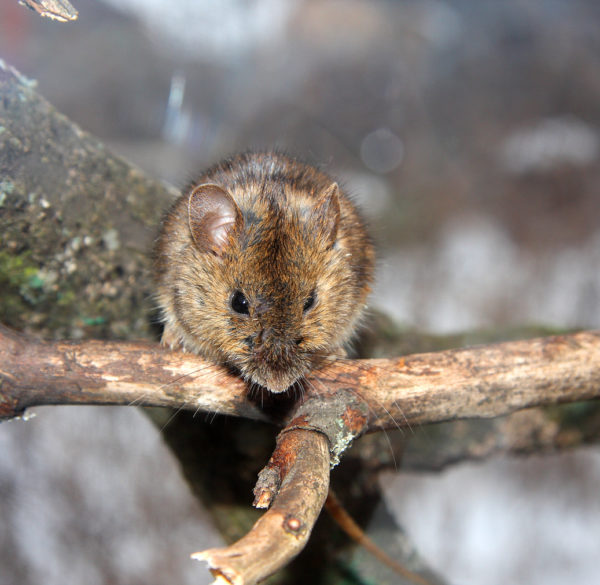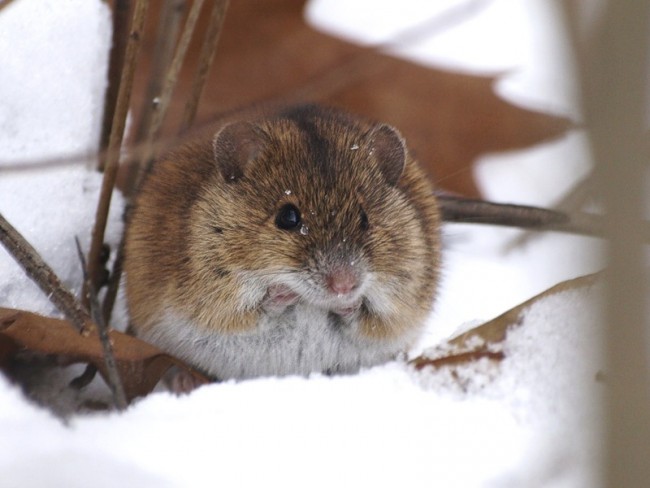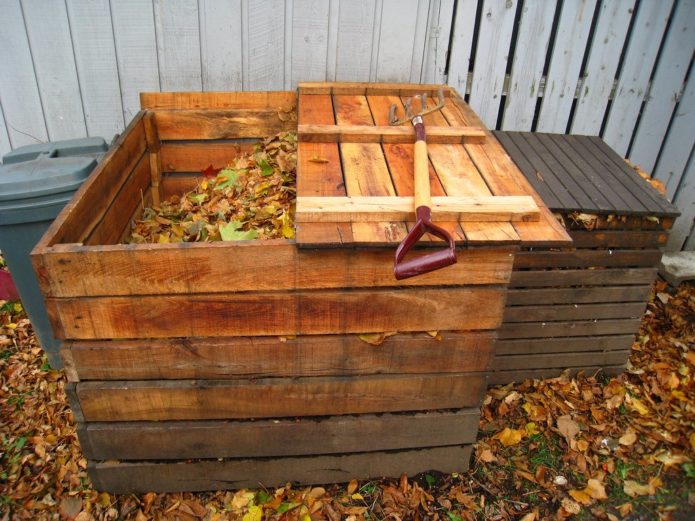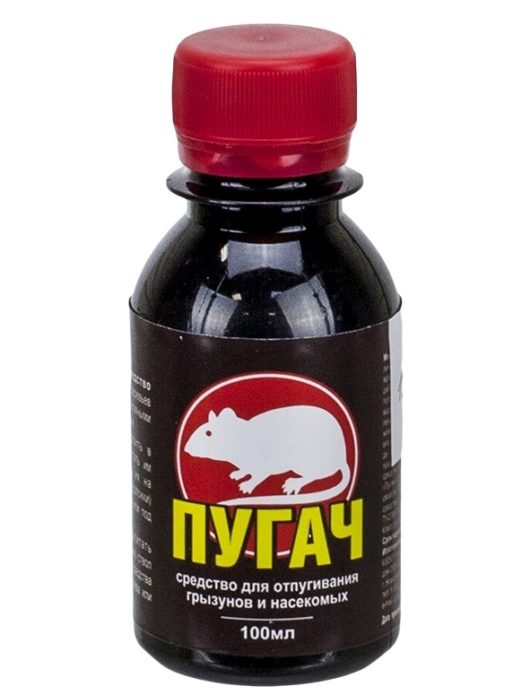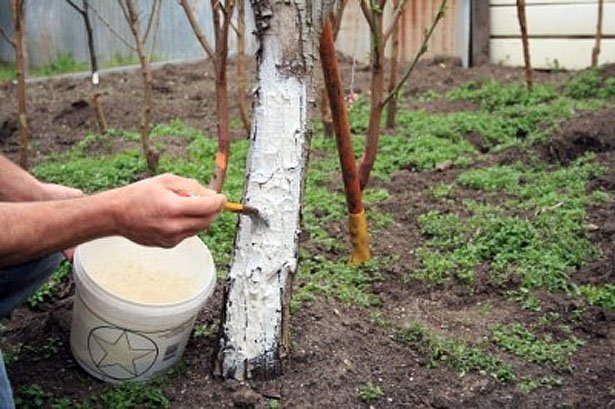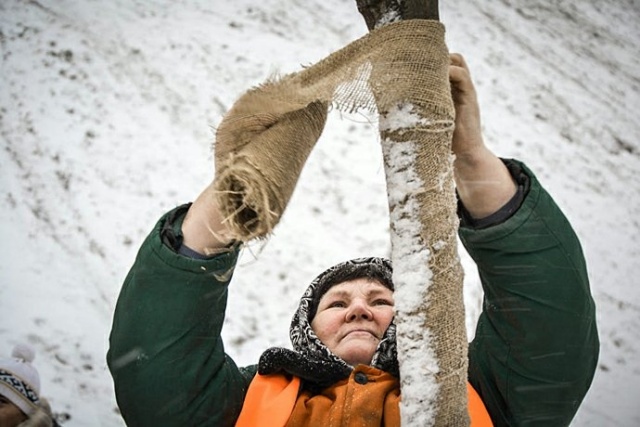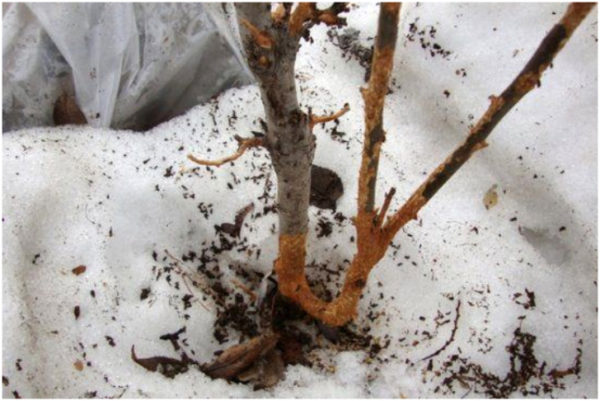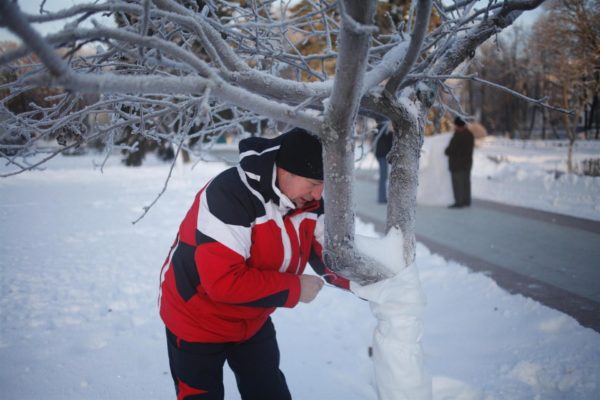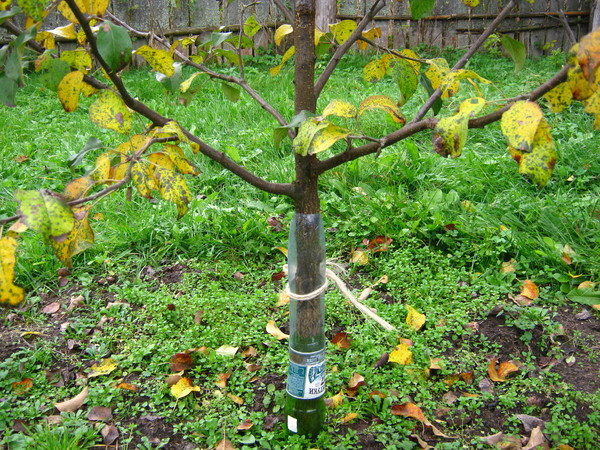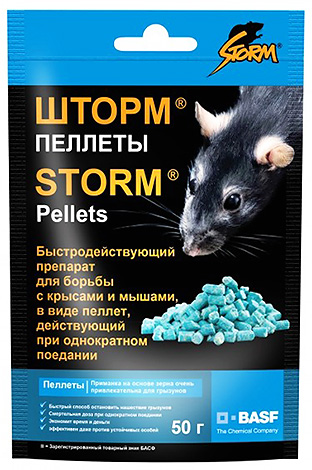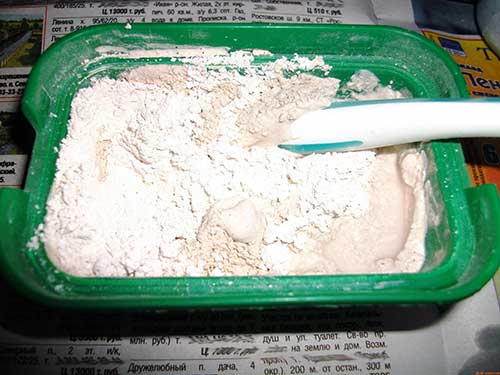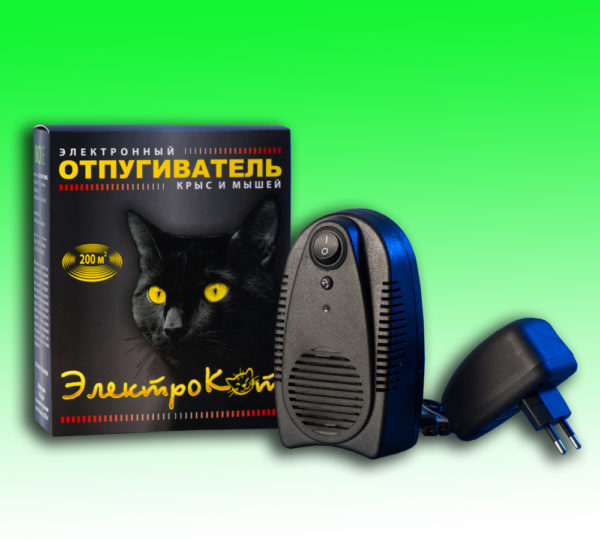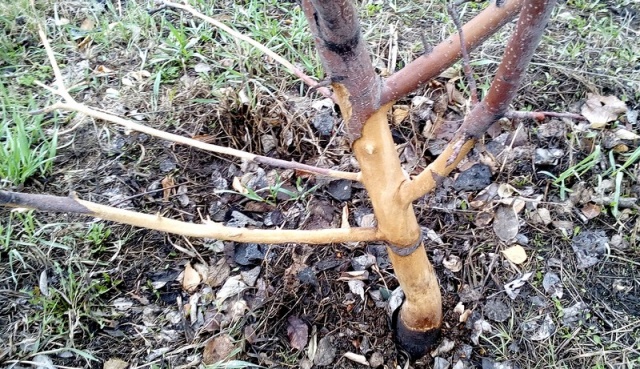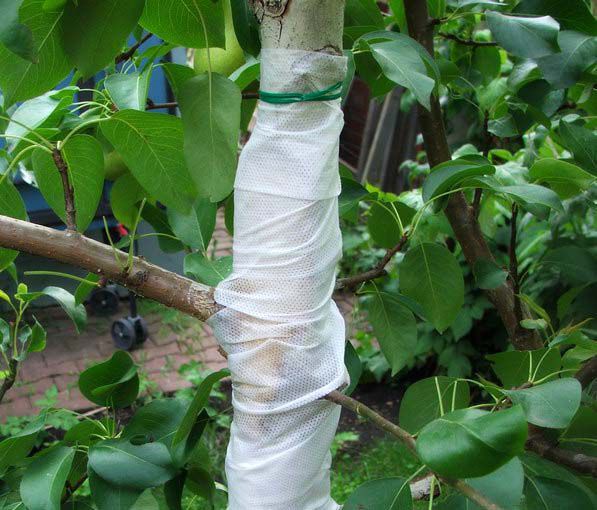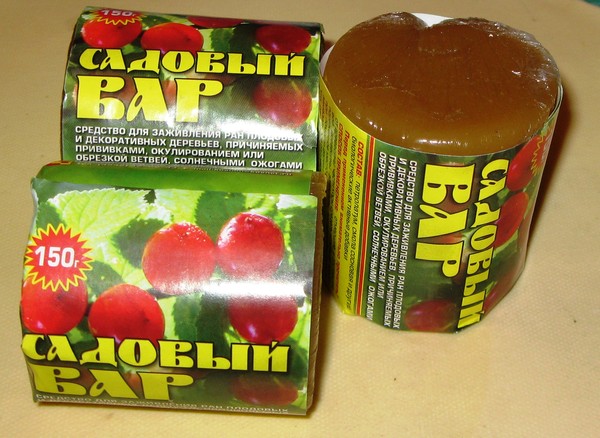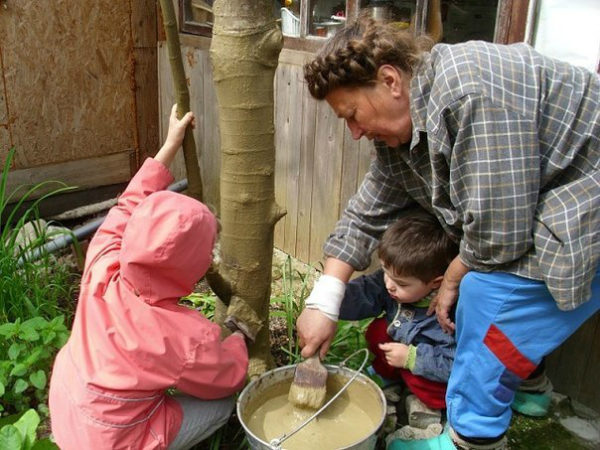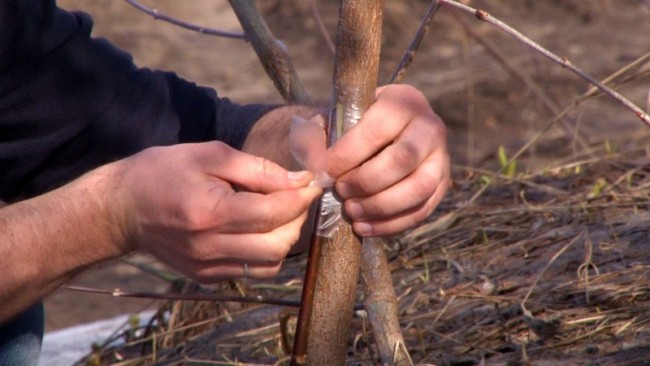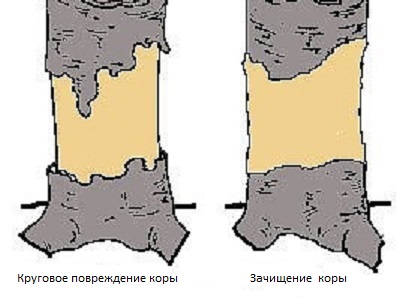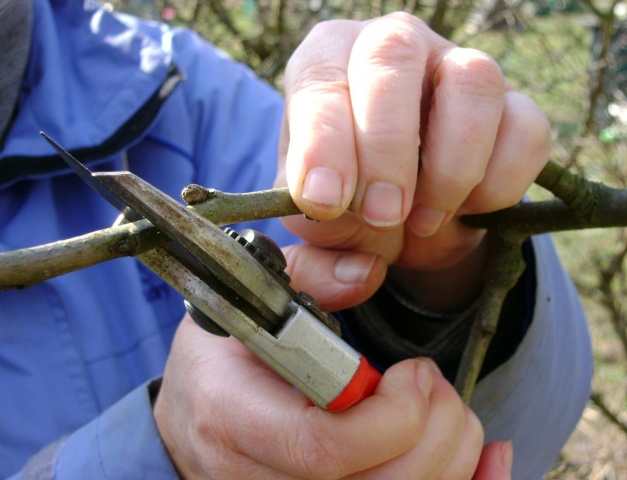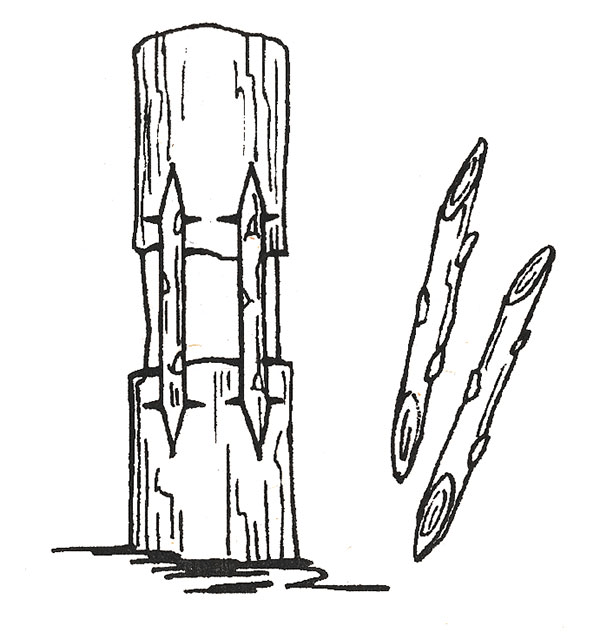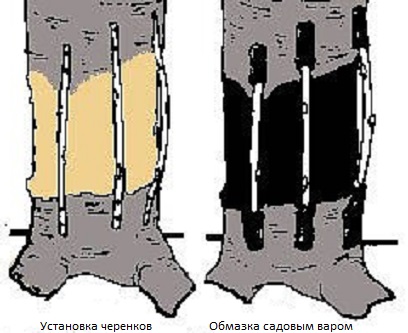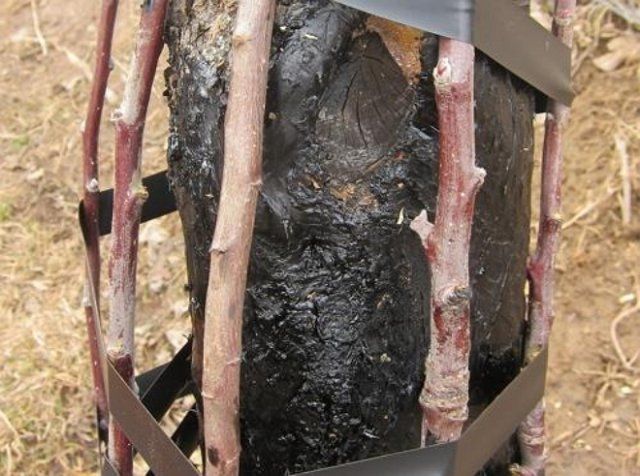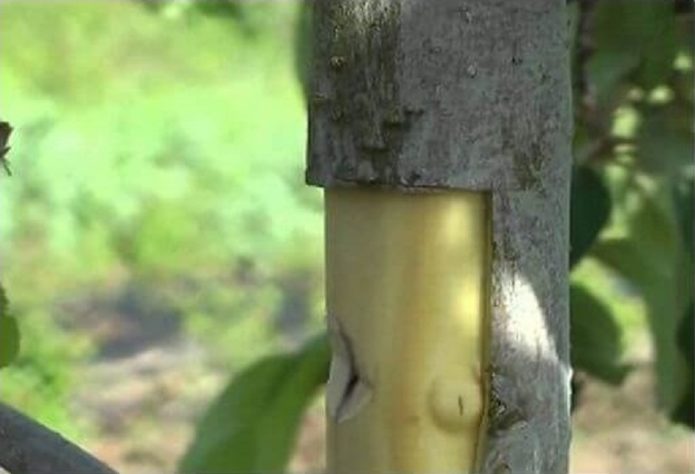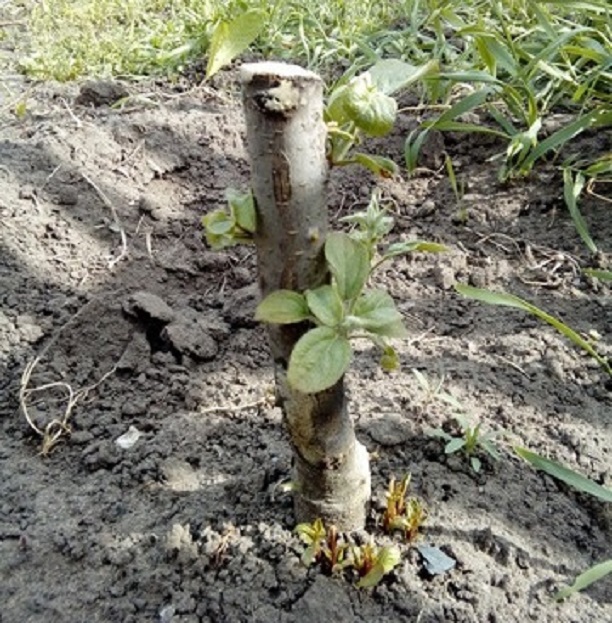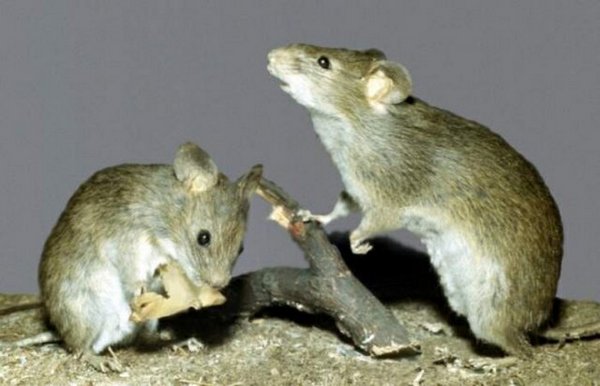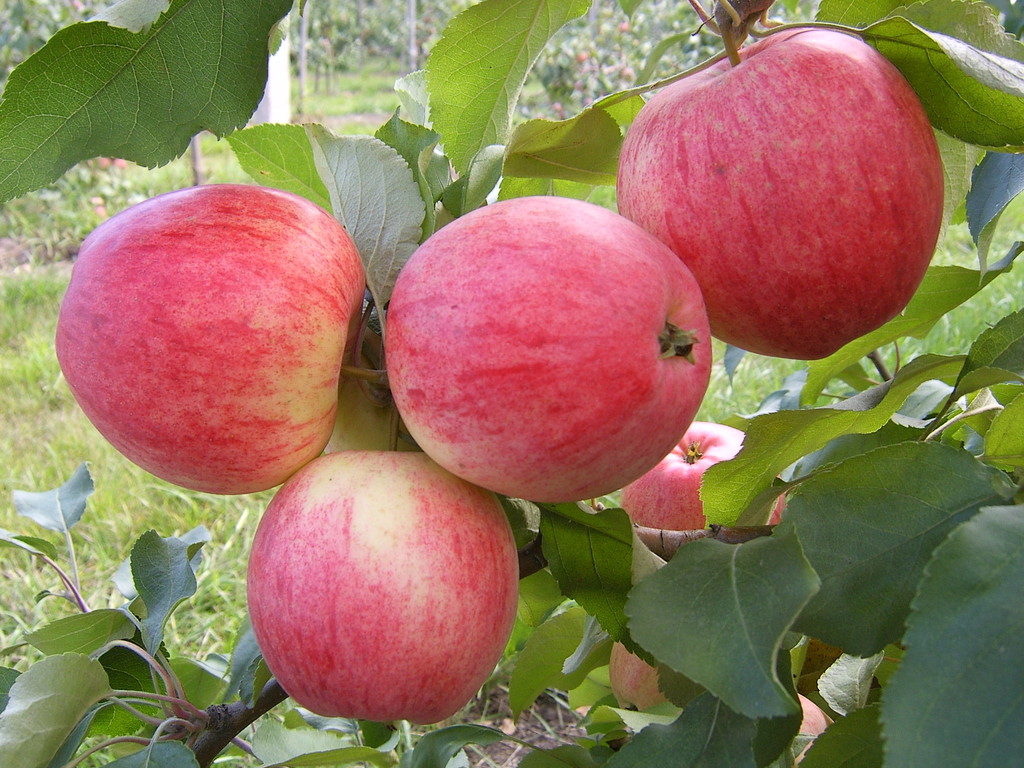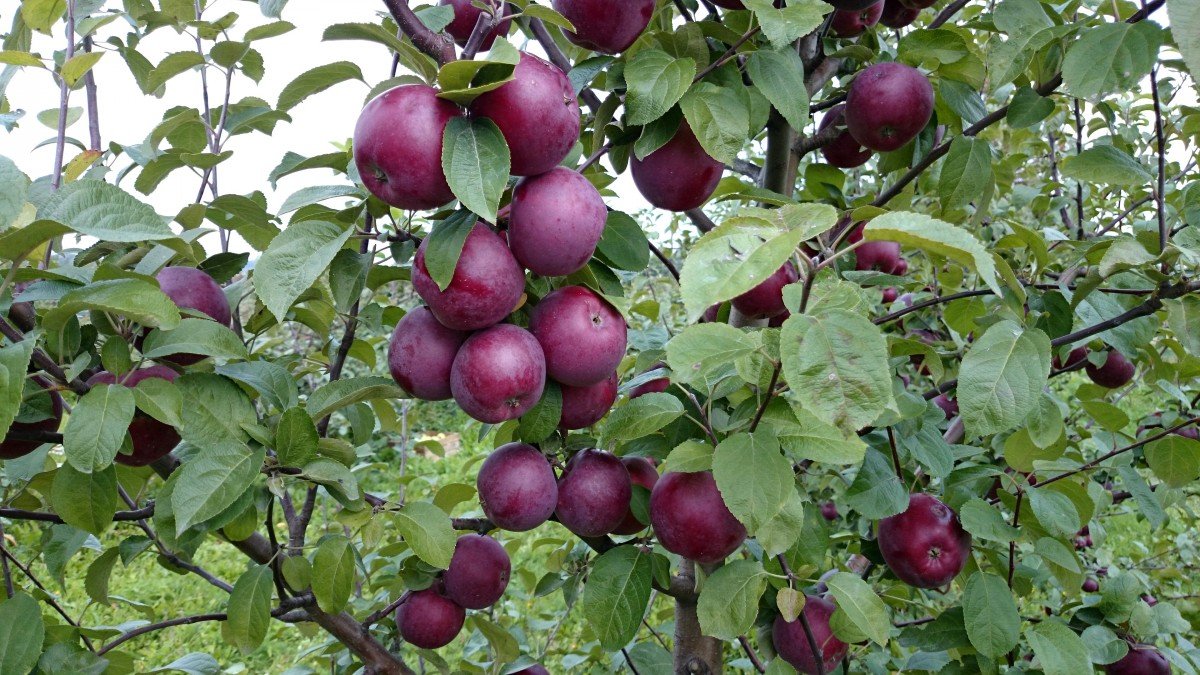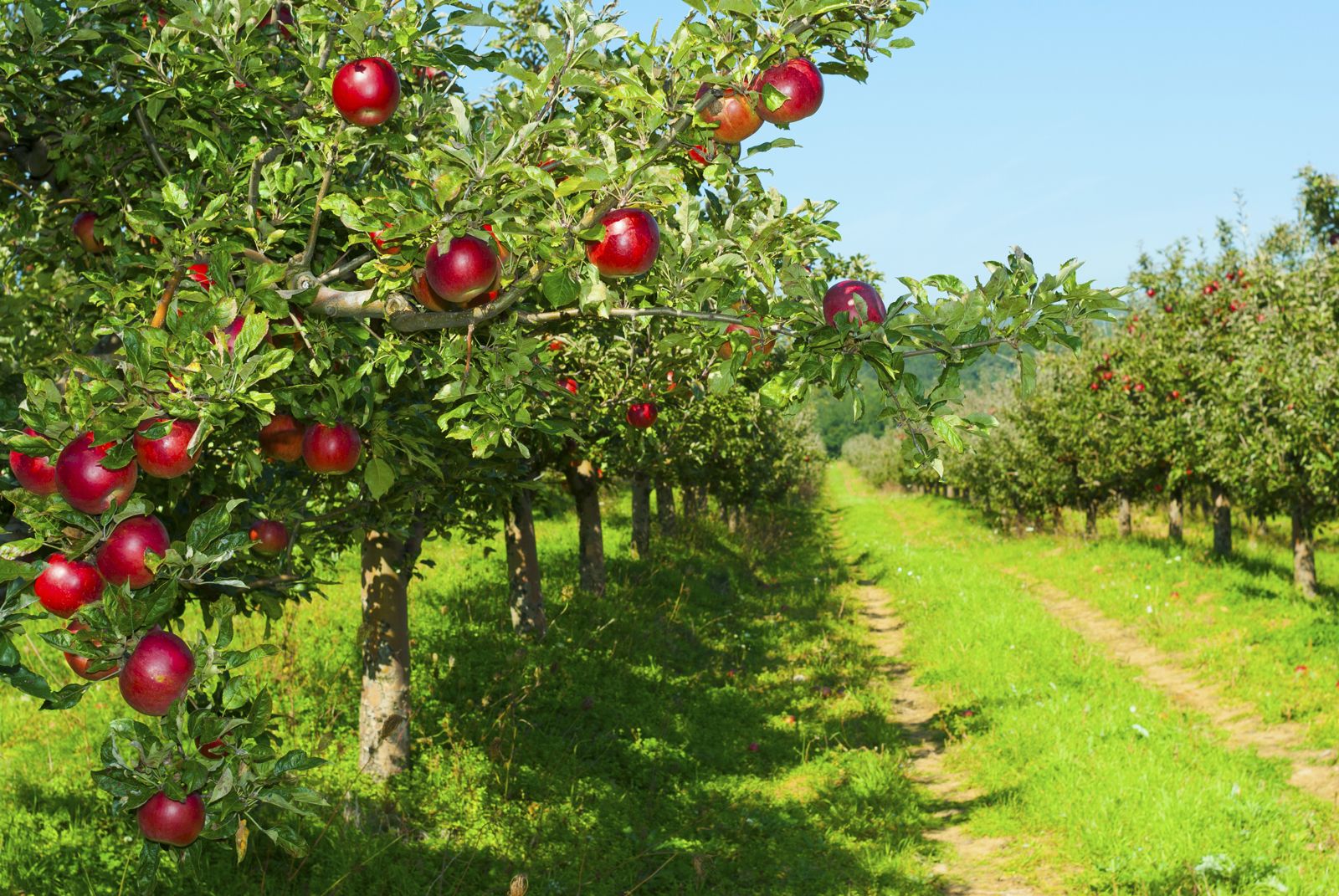After the end of the summer cottage, it is necessary to prepare the apple orchard for winter. Every gardener knows: in the cold season, fruit plantings can suffer not only in severe cold or thaw. Mice cause considerable harm to trees. Small trees are especially vulnerable: pests gnaw their trunks and roots. The favorite food of mice is apple trees, the bark of which has a soft structure and, unlike stone fruits, is not bitter. Rodents are most active in late winter - early spring, when, in search of food, they make massive invasions of apple trees, severely damaging the bark around the trunk, which often becomes the cause of their death. Therefore, one of the main tasks of gardeners is to take protective measures in the fall, and to apply effective rescue methods if trees are damaged by mice.
Content
Why are mice damaging an apple tree dangerous?
Hungry mice, having entered the garden, gnaw on the bark in the trees, exposing the bole. As a result, sap flow is disrupted, which leads to the gradual drying of plants.
In addition, such trees become more vulnerable to diseases and pests. With minor damage to the trunk, the apple tree can be restored.
Video: mice gnawed on an apple tree
But if the mice gnaw at the roots strongly, leaving only thin strings of them, or made many moves in them, the tree will begin to fade and eventually die. It is impossible to restore it; it will have to be replaced with a new seedling.
How to protect an apple tree from mice
The protection of apple plantings from mouse attacks in the cold season should be taken care of in advance, using effective techniques and available means.
Preventive measures
In the fall, you should put things in order on the site - mice like to hide in fallen leaves, make holes in it. After harvesting, the tops and other plant residues must be collected and placed in a compost box and tightly covered with a lid. Fallen leaves from trees, dry branches after pruning should be burned. It is also necessary to dig up the soil in the near-trunk circles, turning over the layers of earth and not breaking clods.
Scare away with smells
The correct use of odorous substances will also help rid the garden of mice. The animals have a very developed sense of smell, and some smells scare them away. Noticing mouse minks, you can put pieces of cotton wool soaked in ammonia, kerosene, mint oil or elderberry infusion in them. Scares off voles and the smell of coriander. In the spring, it is worth sowing this plant in the garden, then dry the collected inflorescences and spread them under the apple trees.
Using whitewash and putty
Trunks and skeletal branches should be whitewashed with garden paint with the addition of odorous substances, using a spray bottle or a wide brush. However, odors from such whitewash evaporate quickly, so it is more effective to coat the tree with thick mixtures containing components that rodents do not like: naphthalene, fish oil.
There are many recipes. For example, a mixture is prepared from laundry soap (1.5 kg), vegetable oil (1 l), naphthalene (150 g) and turpentine (200 g). You can mix naphthalene with fish oil (1: 8). The resulting composition is thickly smeared with branches or soaked with pieces of cloth and laid out around the trees. But this impregnation will need to be renewed after snow falls. Clay coating (2 kg) mixed with a 5% solution of sanlisol also reliably protects the apple tree from mice.
Treatment with fungicidal preparations
Treatment of the orchard with a solution of a fungicide (copper sulfate, Bordeaux mixture), which smells unpleasant for mice, will also help. Such spraying will not only scare away rodents, but also destroy harmful insects, prevent the occurrence of fungal infections. After falling leaves in dry calm weather in the morning or evening hours at an air temperature of +50From the crown and the near-stem circle, spraying with a solution of copper sulfate (100 g \ 10 l) is carried out. For young growth, 2 liters of liquid are enough, for a fruit-bearing tree - 10 liters.
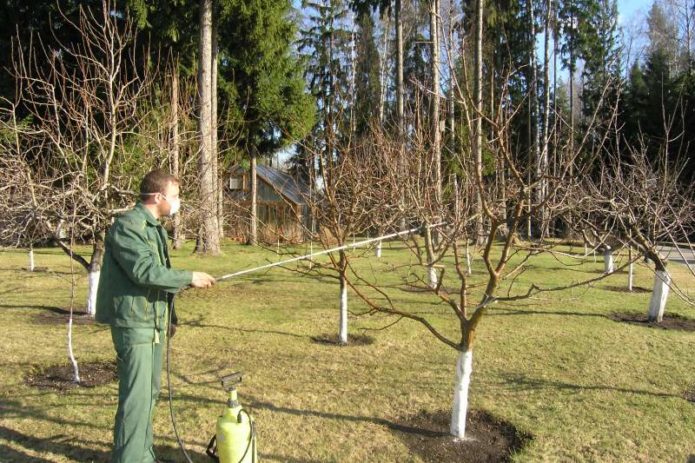
Spraying the apple tree with fungicides will not only scare off mice, but also protect against harmful insects
With the arrival of the first frost, apple trees can be treated with a 1% solution of Bordeaux mixture. Feeling an unpleasant odor, rodents will stay away from fruit plantings, and late processing times will preserve its effectiveness for a long time.
Soil mulching
The trunk circle should be covered with sawdust soaked in an oil solution of creolin (1 teaspoon \ 1 liter of sunflower oil), 5% solution of sanlisol. Celandine is a good mulching agent - if you mulch the soil under the apple tree with the stems, leaves and roots of celandine, the mice will bypass it.
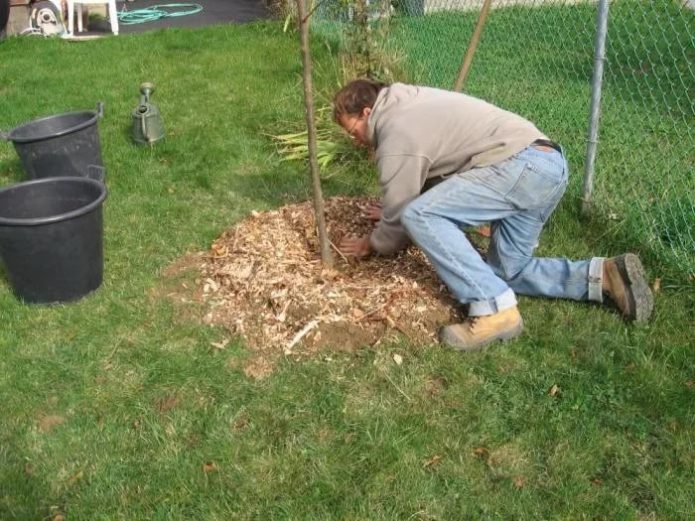
The trunk circle in the fall must be covered with a layer of mulch, to which creolin or sanlisol is added
A solution of oil-based creolin, applied to trees, not only scares away rodents, but also heals damaged areas on the bark, protects against the destructive effects of adverse weather, from infections and harmful insects.
In winter, it is advisable to look at the site from time to time, especially after a heavy snowfall, shake off the snow from the branches and trample it well around the trunks in order to close the mouse holes and prevent rodents from getting to the roots.At the same time, it is necessary to examine trees and, if damage is found, urgently take action.
Barrel strapping
Tying with any protective material will help to protect the bark of trees from toothy animals. Before freezing, the trunks of young apple trees are wrapped with non-woven moisture and breathable light-colored agrofibre - lutrasil, spunbond.
Roofing material is also suitable, but in this case, the trunks are previously tied with a soft cloth so that there are no gaps. Then they wrap the tree with roofing material and fix it with twine or wire. The protective material must adhere closely to the trunk, otherwise moisture can accumulate in the voids and at subzero temperatures the tree will quickly freeze over. The lower edge of the roofing material must be buried in the ground so that the nimble voles do not dig a tunnel and damage the roots of the tree. With the onset of spring, the dark roofing material that attracts the sun's rays is quickly removed.
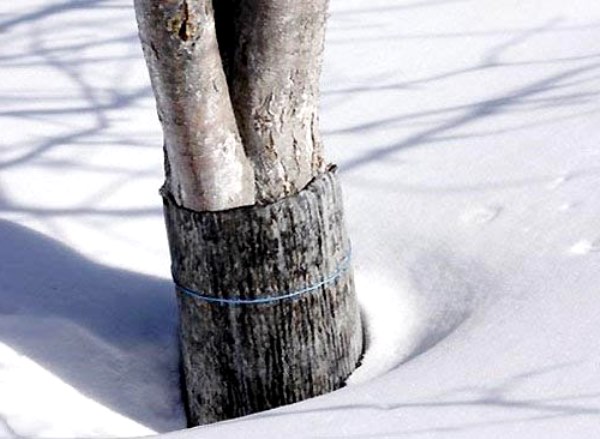
You can also cover the apple tree with roofing material, but first you should wrap the trunk with non-woven material
Many gardeners use nylon tights for tying the trunks of apple trees, which allow air and water to pass through well. Such a harness, soaked in kerosene or diesel fuel, will not allow mice to approach the landings.
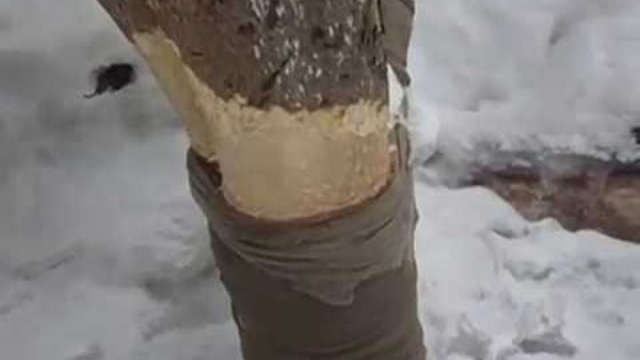
Even nylon tights are used to tie the trunks, but if you cover only the lower part of the trunk with them, with a high snow cover, mice can damage the bark
Spruce twigs are also used, pointing the needles down. And so that nimble animals could not get to the root collar, the earth is scooped up close to the spruce branches.
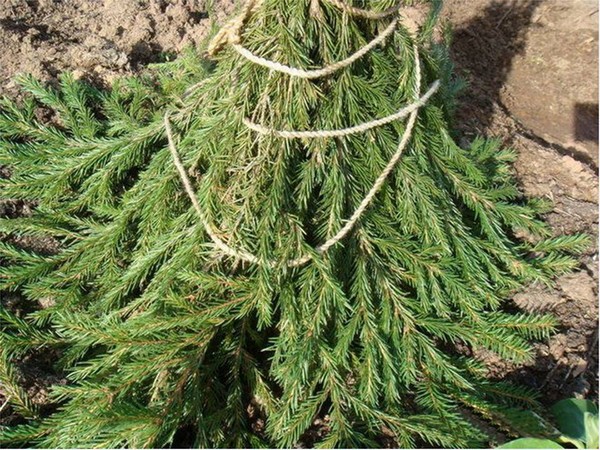
Gardeners use spruce branches to protect fruit trees by wrapping the trunks with them so that the needles are pointing down
Video: how to save an apple tree from mice
Summer residents even adapted plastic bottles for tying trunks. They cut off the bottom and top, cut them lengthwise and put them on the stem, deepening the base of the lower bottle into the ground. The bottles are placed in several tiers, securing them with braid. But in a thaw, such a shelter must be removed: under plastic that does not allow moisture to pass through, the bark can undermine.
Tree fencing
In order to protect the landings from rodents, fences are installed. A cover of wire fabric is made around the tree, necessarily burying it 40 cm into the ground, given that mice dig holes at a depth of about 20 cm. Only the metal mesh should be with small cells so that nimble animals do not slip through them. A plastic net is also suitable, the main thing is that the cover should cover the trunk to a height of 1.5 m. Air and sunlight easily penetrate through the grating to the plants, which prevents the development of diaper rash and diseases.
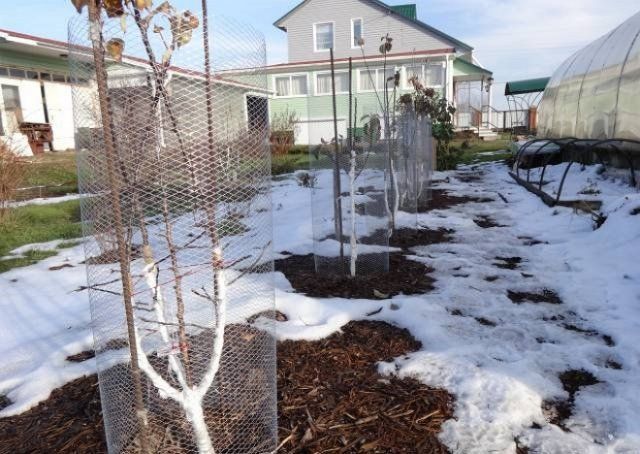
The holes in the metal mesh must be very small, otherwise small animals will quickly rush through them
Video: protecting an apple tree net from mice
Poison bait
You can get rid of rodents on the site using bait with poison. Ready-made baits Rat Death, Nutcracker are placed in the garden at intervals of 2 m under a cover made of cardboard or tin. The agents cause 90% death of mice in 4-8 days.
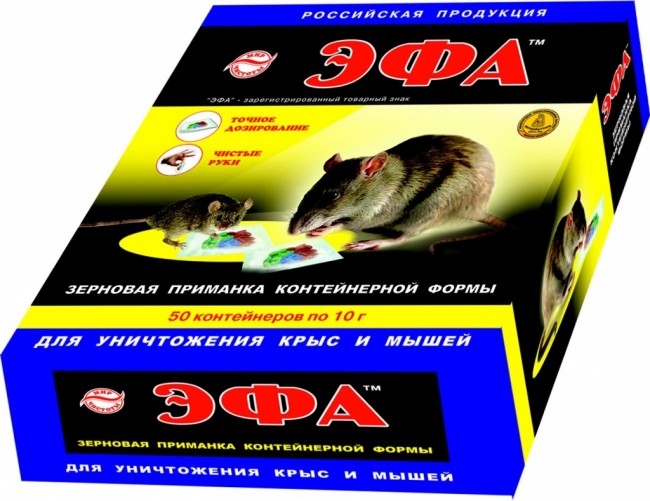
Efa food bait is highly edible, as it is made from grains with the use of aromatic food additives - products loved by rodents - nuts, meat, chocolate
Quickly acts on rodents and Storm. The bait consists of wax briquettes that do not soak under the influence of moisture. After the application of the poison, the rodent populations disappear completely. But using poison baits should be very careful. In summer cottages where there are pets, it is better to use the harmless drug Bacterontsid. The gel, mixed with steamed grain, is laid out in holes (1 teaspoon) or under trees.The biological preparation begins to act within 20 minutes: once it enters the stomach of the animals, it causes typhoid fever and subsequent death.
Ultrasound application
Effective in the fight against rodents and ultrasonic agents. Acoustic scare away technology is the safest. The devices generate sounds of a certain frequency, which are not perceived by the human ear, but have a frightening effect on mice. Rodents are not able to withstand ultrasound for a long time and soon leave the garden. However, acoustic devices are not cheap, a set of batteries lasts for one month, and the sound signal in the open air weakens.
How to save an apple tree damaged by mice
The activity of hungry rodents increases at the end of winter, and if mouse pest is noticed when inspecting trees in early spring, action should be taken immediately.
Garden pitch for damaged trees
For minor injuries, medical bandages are used. Previously, the wounds are thoroughly cleaned of dead parts and disinfected with 1% solution of copper sulfate, 3% solution of Bordeaux mixture. Then a thin layer of putty is applied to prevent premature drying of the wound surface and prevent insects and pathogens from entering the wood. From above, they must tie the damaged area with a film or garden bandage.
Gardeners most often use garden varnish as a putty - an environmentally friendly product that you can buy in a store or make yourself from wax, rosin and fat. The wax seals the cracks, preventing moisture from entering the wounds. Rosin adds stickiness, allowing the putty to stick tightly to the wood. And thanks to the presence of fat, the var does not crack. Rosin, fat and wax are taken in a ratio of 1: 1: 2, and, melted separately, and then mixed, they are slowly poured into cold water. They take out the finished pitch after hardening, and before use, heat it until it softens. The wax can be replaced with turpentine.
If you cover the damaged area with too thick a layer of garden varnish, the wood under the putty will rot after a while.
In addition to garden varnish, a clay chatter is used to heal the damaged bark. Manure is added to the clay (6: 4) and, having mixed, is applied to the wound with a layer of no more than 3 cm. Then it is wrapped with a cloth (not synthetic!) To prevent the putty from crumbling or being washed off by rain. On top of the fabric, they are again coated with a clay mash. Gradually, the material under the clay disintegrates, leaving no constriction marks on the tree. The following spring, the chatterbox is washed off with water, the wound has already healed by this time.
Biobalms, garden ointments, widely presented in specialized stores, also have a healing effect. But before using them on the site, you must carefully read the instructions.
Video: treatment of damaged apple trees in the spring in the country
Bridge grafting for severe injuries
The use of medical dressings is effective only for minor wounds. In case of severe damage, when, after a mouse sabotage, the bark begins to die off, and the trunk dries up under it, more radical measures will be required. Wounds found in winter should be quickly covered with foil, and wrapped with spunbond on top for insulation. To save a tree with a ring wound in the spring, grafting is carried out with a bridge.
Step-by-step instruction
- The damaged area is cleaned to healthy wood and treated with a disinfectant solution.
- The grafting material is harvested in advance in the fall or spring before the start of sap flow. Last year's strong shoots are cut into pieces 5 cm longer than the damaged area. The graft on both sides should have oblique cuts with an angle of 10-15 degrees.
- T-shaped cuts are made on the bark above and below the bare area and cuttings are inserted into them, always keeping the direction of their growth.
- One end of the scion should be inserted into the lower incision, very carefully deflecting the bark, and the other into the upper one. And so in a circle.
- The number of cuttings depends on the diameter of the trunk. For a thin sapling, 2 bridges are enough, for a thicker tree 6–8 pieces are needed.
- The ends of the scion should fit snugly against the wood, otherwise the cuttings will not take root.
- You can fix the bridges with twine, film, plaster. And then you need to coat the grafting site with garden varnish or other putty and wrap it with foil.
If the vaccination was carried out correctly, the grafts will take root, and after a month you need to remove the harness, otherwise rot may begin under it. Shoots that begin to sprout from the buds of the cuttings must be removed. Gradually, the bridges will thicken and close completely along the entire diameter of the trunk.
Video: grafting an apple tree with a bridge
Bark engraftment method
Experienced gardeners, with severe damage, plant healthy bark on an exposed place. This is done in early spring, before the growing season. A piece of bark, removed from an intact branch, is applied to the surface cleaned from irregularities. The patch is installed taking into account the direction of growth on the donor and fixed with electrical tape, grabbing the healthy part of the bark by 5 cm.
In order for a weakened tree to recover faster, it is necessary to take care of its moisture saturation and good nutrition. In the fall, the winding is removed. However, the apple tree will not develop too intensively in the future, cases of diseases will become more frequent, and there will be no full-fledged fruiting.
Back-cut trunk
After a massive invasion of mice, a heavily nibbled apple tree can only be saved by cutting the trunk for reverse growth, which must be done before the start of the growing season. The tree is cut down to healthy wood, but always above the root collar. After pruning, a stump of greater or lesser height remains, and so that it does not grow in spring, the place of the cut is covered with pitch. A tree with a powerful root system will rapidly grow new shoots.
However, this method is suitable for trees over 5 years old with a strong root system. Cutting the trunk will not help young trees with insufficiently developed roots. Damaged apple trees must be uprooted and replaced with new seedlings.
Restoring an apple tree with damaged roots
In winter, mice, in search of food, make moves in the loose snow and gnaw at the roots of apple trees. If the root system is severely damaged, trees in the spring can simply fall to one side. It is no longer possible to restore them. But if at least some of the roots survived after the murderous sabotage, we must try to save the tree.
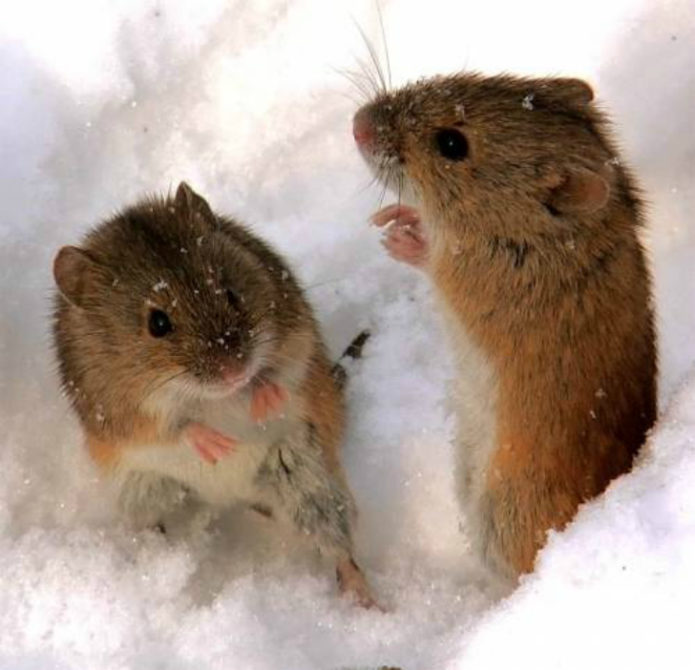
In search of food, small rodents make moves in the thickness of the snow and along them climb to the roots of trees
As soon as the snow melts and the soil warms up, it is necessary to free the roots from the ground, treat the eaten roots with a 0.02% solution of Heteroauxin, a stimulant responsible for accelerated growth, and dust them with wood ash. Then sprinkle them with soil mixed with superphosphate (300 g) and ash (3 L). After compaction of the soil, the trunk should be tied to a peg and 80% of the branches should be cut off. This pruning is necessary to balance the roots and crown.

In an apple tree with damaged roots, most of the branches are removed, leaving no more than 20% of them in the crown
Pieces of rags soaked in fragrant solutions of creolin, formalin, which scare away rodents, should be laid out near trees and in the discovered mouse holes. With good care, the tree will grow new roots during the season, the crown will form, it will gradually recover and will bear fruit for many years.
Small rodents, despite their small size, bring great harm to apple orchards. Trees may die after murine sabotage. To protect fruit plantings from uninvited guests, it is necessary to carry out preventive work using all modern means. Well, if the mice nevertheless entered the site and damaged the apple trees, all measures must be taken in time to save them.
